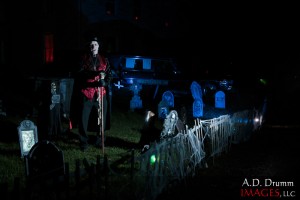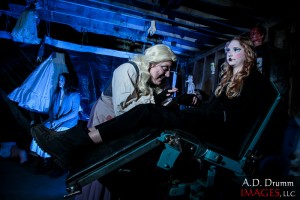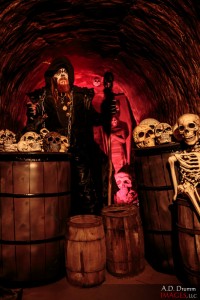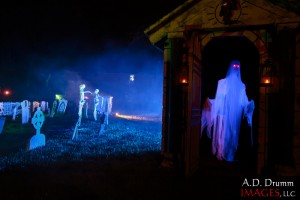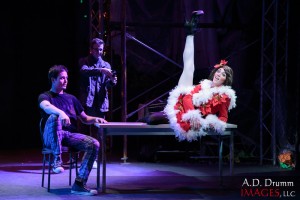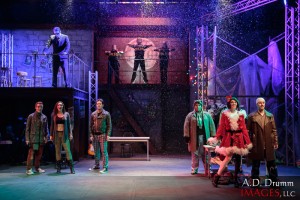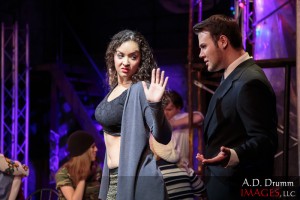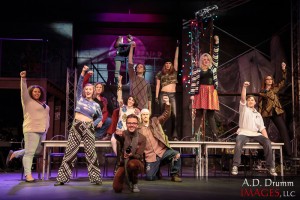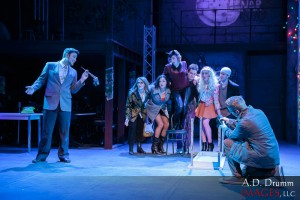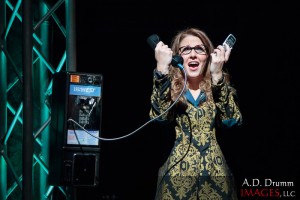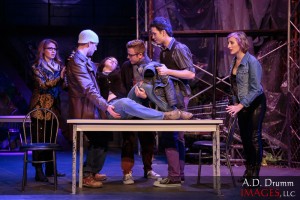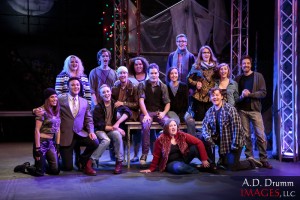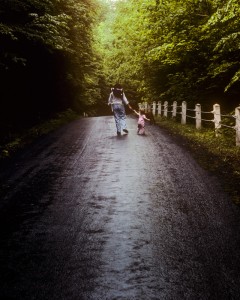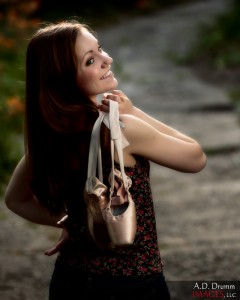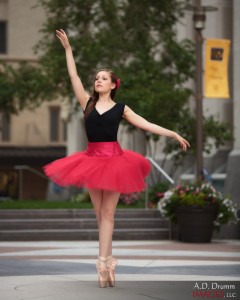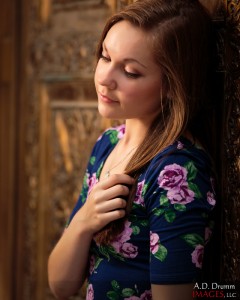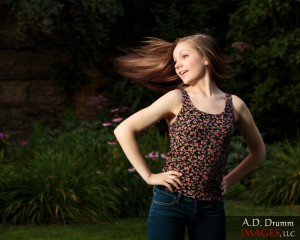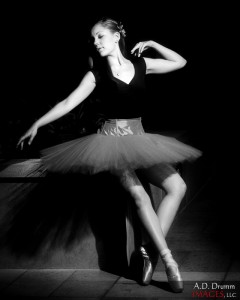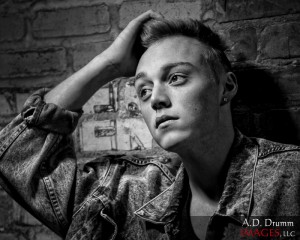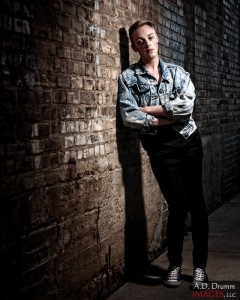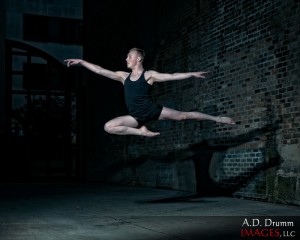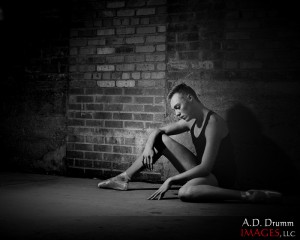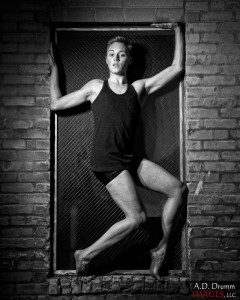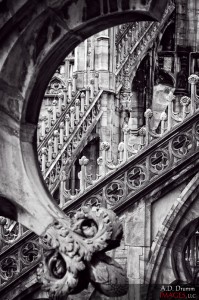
Lynne and I traveled to Italy for our first visit to this amazing and old country. We began our trip separately, as Lynne attended a retreat in the hills north of Rome, while I headed to Milan to attend the Italian Grand Prix Formula 1 race. It was my first Formula 1 race and one of those on my bucket list.
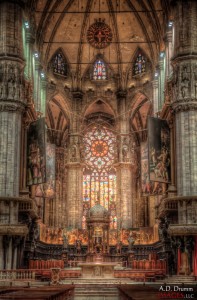
When arriving in Europe, it’s usually morning and your objective is to stay awake until around normal bedtime. After I landed in Milan, I made my way to the central train station and, from there, my hotel. The hotel was about a block and a half away – convenient for arriving and departing, but also for traveling the short distance to Monza, the site of the race. I was able to check in early, then I headed back to the station and took the subway downtown to the Duomo area.
The Milan Duomo is an old Gothic church. It’s an amazing site, and their museum across the piazza was great. The top photo was taken from atop the church – lots of opportunities there for great black and white photos.
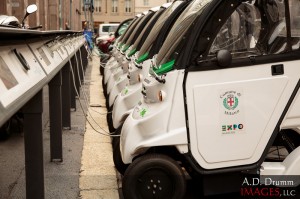
Small vehicles rule Europe. Milan apparently has some sort of electric car deal going on. It reminded me of the bikes-for-rent things here.
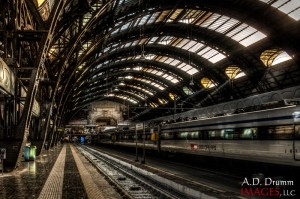
The central train station, Stazione Centrale, was build during the 1930s by Mossolini – it’s grand and spectacular, a symbol of the nationalism that serves as the hallmark of fascism. It was hard to capture in a photo, and I never did grab a shot of the exterior.
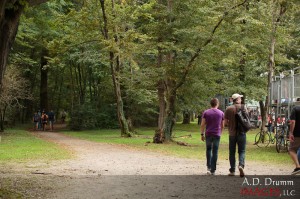
I arrived in Milan on Thursday before the race. The cars start running for practice sessions on Friday. Qualifying is Saturday, and the race is Sunday afternoon. There were a couple trains to Monza per hour – although I didn’t figure out the second one until Sunday – and they offered a special deal single ticket per day good for the train ride plus a bus from the Monza train station to the track, Autodromo Nazionale Monza. The track sits inside a huge park. It’s historic – built in the 1920s and served as the home of nearly all the Formula 1 Italian Grand Prix. It’s where Mario Andretti watch races as a teenager. (Mario is amazing – he’s won the F1 World Championship, won the Indy 500, won Daytona.)
From the bus drop off, you have a good mile walk to the track. Once inside the track boundaries, I had another mile or so to get to the stands with my seat. On Friday, I wandered around the track. It really is a park with park-like paths, some wide, some narrow, some paved. The back part of the track is surrounded by woods. There once was an oval track with severely banked turns. Those concrete banked sections still exist. The current track runs under them in a couple places, and the roads/paths also drop below them here and there or run alongside these old sections. They haven’t been used in decades, but they were featured in the James Garner film, Grand Prix.
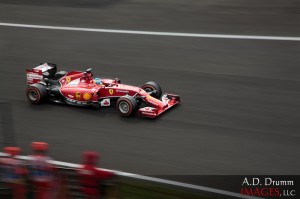
The home team in Italy is Ferrari. They also have quite a history and have raced in every Formula 1 world championship. So, you see lots of red Ferrari gear and flags all weekend. The Italian Ferrari fans are known as the tifosi, and they are everywhere. For this race, I joined them. They’ve had a few tough years and unfortunately had some troubles in the race with Alonso having to retire his car. I did manage to grab a decent shot of him in his Ferrari. Panning as these cars fly by at close to 200mph is definitely a trick – one I’ve not quite mastered!
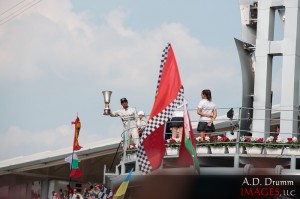
Each day, Friday to Sunday, there were more people at the track. I figured it would be lighter for practice on Friday, but it’s surprising how many people come out only on race day. Besides the F1 race, there are support races with the GP2 and GP3 open-wheel cars – many up-coming young drivers may well drive F1 some day – and a Porsche class. So, there are things going on on-track throughout each day.
At the end of the Grand Prix, the fans jumped the fence and scrambled to get a glimpse of the podium ceremony. It stands out over the track near the start/finish line. By the time I got close, most of the ceremony and interviews were done. I was somewhat behind the podium and someone’s huge Ferrari flag on a 30 foot pole kept blowing and obscuring the view. But before winner Lewis Hamilton left the podium, he turned and held up his trophy and grinned to those of us in back. It was great, the flag dropped for a moment, and I had a shot. Thank you, Lewis!
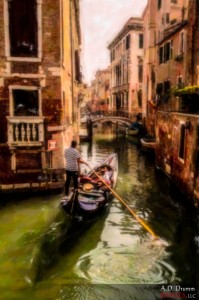
On Monday after the race, I headed to Venice where Lynne and I were to meet up. Since I was only a couple hundred yards from the train station, my trip was fine. Arriving in Venice, I just had to make my way to our hotel from the Venice train station. This involved riding one of the vaporettos, a water bus. Venice is a collection of islands. There are no cars, no scooters. The only bicycles I saw were being ridden in a piazza by children. So, you take the water bus or you walk. Often, you do both! After stepping off the water bus, I had a bit of a walk which wasn’t particularly far but involved crossing three bridges. With suitcases, this isn’t terribly fun.
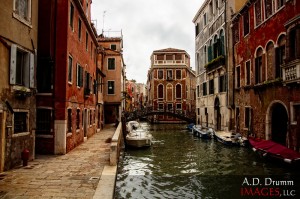
Lynne’s travels were not as smooth as mine. That’s an understatement, but she did make it to Venice on Monday. I had checked in and wandered about waiting to hear from her. As I walked through the narrow streets and across countless canals, I kept thinking, “I wonder if I’d ever be able to find this place again?” Maps are hugely important in Venice. It’s so easy to lose your way, although by the time we left, I at least had a pretty decent idea how to get around the area surrounding our hotel.
While there, we actually found out some friends we haven’t seen since we left upstate NY in 1992 were also in Venice, and we arranged to have dinner together. It was an incredible happening, and it was fun to catch up with them. Sometimes, it really is a small world.
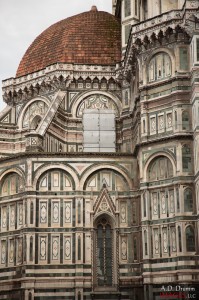
I really loved the uniqueness of Venice. But we soon left for Florence. Lynne had already had a bit of a tour of downtown Florence on her trip from the country to Venice. She in fact took a train from Florence to Venice as the final part of that trip.
Florence is a beautiful city with tons of great art including Michelangelo’s David. This is an imposing sculpture, 17 feet high, and it’s incredible. After viewing many sculptures from ancient Rome to others from his time, there is something just different about his work. David’s face, in particular, had a life and expression others do not.
Florence has its own Duomo with the largest dome of its time, quite an engineering feat. We bought Firenze Cards which get you into many of the sites in the city and also let you skip the long lines. We jumped to the front of the line entering the Duomo, but didn’t realize until we walked inside and saw stairs that we had found the entrance to walk to the top of the church. That was over 460 stairs. I’m sure the many miles I walked at the racetrack, around Milan, and in Venice helped me make it up there. Lynne managed to make the climb as well. The view of the city was great. We later traveled across the river and up the hill to the south of the city center for another remarkable view.
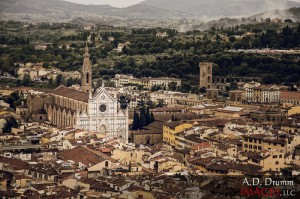
From on high, you can see that the city lies in a valley surrounded by hills. It’s rather spectacular.
From Florence, we headed to our final destination, Rome.

In my head, I feel Milan and Florence had a similar feeling to them. Venice was different, of course. But Rome felt mostly just big. Walking the streets of Rome was akin to walking through Manhattan. Except in Rome, vehicular traffic runs on different rules. Maybe, you could say, one rule: Stay mostly on your side of the street. Lanes are something made up on the fly. There didn’t seem to be many if any lane markings. And, like much of Europe, motorcycles and scooters just go wherever there is room.
Crossing streets can be a trick. They do seem to stop for pedestrians in marked crosswalks, but you have to be clear you really are attempting to cross. And some streets are so big with so much traffic, I’m not sure I’m brave enough to attempt crossing even in a crosswalk. We managed our way across one roundabout more by finding the place with the least traffic and an island of parked buses.
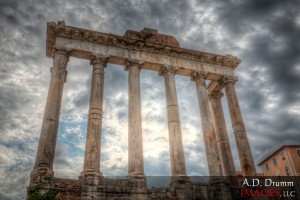
There is much ancient to see. I think the Coliseum was particularly noteworthy. The nearby forum was pretty amazing, too, and it appears that archeological digs are still active. To think back to the times these places were built and the amazing civilization that existed, amazing building that took place – it’s all rather hard to envision.
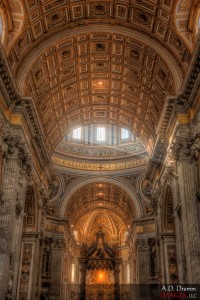
Nestled within Rome is the smallest country in the world, Vatican City. We took a guided tour of the Vatican museum which ends in the Sistine Chapel. I really didn’t realize how much artwork resides there nor the breadth of it from ancient Rome and Egypt to modern. Once again, I was blown away by Michelangelo’s work in the Chapel. You can then walk into St. Peters where his most famous Pieta resides. It’s so unfortunate the security that’s been needed to protect this sculpture after someone broke Mary’s hand off with a hammer. I saw it much closer and pre-damage at the New York Worlds Fare as a child with my parents. I still remember that experience.
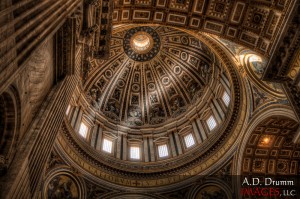
St. Peters is quite the cathedral – huge, beautifully decorated. And, at least by American standards, old. The plaza in front of the church was filled with platforms and seats. We were there on a Tuesday. On Wednesday, Pope Francis would make his usual appearance.
My grandparents immigrated from Italy, and my mom and her relatives all considered themselves Italian. Not Italian-American, although that would be the term today. Just Italian. She never made the trip to Italy. I think she was never fond of the idea of a boat trip across the ocean or, later, a plane trip. I thought of her a lot during my time in the “old country.” Maybe more so in Vatican City. I think she’d have loved to see that (and to see the pope).
I certainly want to travel to Italy again. Next time, I’d like to go south to Foggia and to Roseto, birthplace of my grandparents. Hopefully, that will happen some day. Meanwhile, I have terrific memories and some decent photos!
